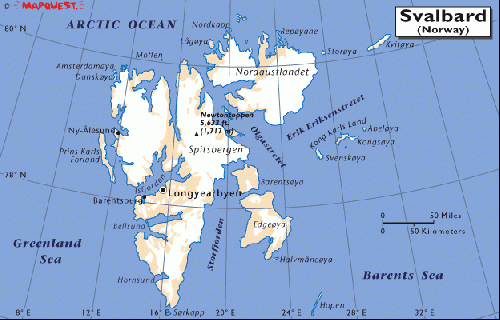One thing Microsoft founder Bill Gates can't be accused of is sloth. He was already programming at 14, founded Microsoft at age 20 while still a student at Harvard. By 1995 he had been listed by Forbes as the world's richest man from being the largest shareholder in his Microsoft, a company which his relentless drive built into a de facto monopoly in software systems for personal computers.
In 2006 when most people in such a situation might think of retiring to a quiet Pacific island, Bill Gates decided to devote his energies to his Bill and Melinda Gates Foundation, the world's largest 'transparent' private foundation as it says, with a whopping $34.6 billion endowment and a legal necessity to spend $1.5 billion a year on charitable projects around the world to maintain its tax free charitable status. A gift from friend and business associate, mega-investor Warren Buffett in 2006, of some $30 billion worth of shares in Buffet's Berkshire Hathaway put the Gates' foundation into the league where it spends almost the amount of the entire annual budget of the United Nations' World Health Organization.
So when Bill Gates decides through the Gates Foundation to invest some $30 million of their hard earned money in a project, it is worth looking at.
No project is more interesting at the moment than a curious project in one of the world's most remote spots, Svalbard. Bill Gates is investing millions in a seed bank on the Barents Sea near the Arctic Ocean, some 1,100 kilometers from the North Pole. Svalbard is a barren piece of rock claimed by Norway and ceded in 1925 by international treaty (see map).
On this God-forsaken island Bill Gates is investing tens of his millions along with the Rockefeller Foundation, Monsanto Corporation, Syngenta Foundation and the Government of Norway, among others, in what is called the 'doomsday seed bank.' Officially the project is named the Svalbard Global Seed Vault on the Norwegian island of Spitsbergen, part of the Svalbard island group.
The seed bank is being built inside a mountain on Spitsbergen Island near the small village of Longyearbyen. It's almost ready for 'business' according to their releases. The bank will have dual blast-proof doors with motion sensors, two airlocks, and walls of steel-reinforced concrete one meter thick. It will contain up to three million different varieties of seeds from the entire world, 'so that crop diversity can be conserved for the future,' according to the Norwegian government. Seeds will be specially wrapped to exclude moisture. There will be no full-time staff, but the vault's relative inaccessibility will facilitate monitoring any possible human activity.
Did we miss something here? Their press release stated, 'so that crop diversity can be conserved for the future.' What future do the seed bank's sponsors foresee, that would threaten the global availability of current seeds, almost all of which are already well protected in designated seed banks around the world?
Anytime Bill Gates, the Rockefeller Foundation, Monsanto and Syngenta get together on a common project, it's worth digging a bit deeper behind the rocks on Spitsbergen. When we do we find some fascinating things.
The first notable point is who is sponsoring the doomsday seed vault. Here joining the Norwegians are, as noted, the Bill & Melinda Gates Foundation; the US agribusiness giant DuPont/Pioneer Hi-Bred, one of the world's largest owners of patented genetically-modified (GMO) plant seeds and related agrichemicals; Syngenta, the Swiss-based major GMO seed and agrichemicals company through its Syngenta Foundation; the Rockefeller Foundation, the private group who created the "gene revolution with over $100 million of seed money since the 1970's; CGIAR, the global network created by the Rockefeller Foundation to promote its ideal of genetic purity through agriculture change.
CGIAR and 'The Project'
As I detailled in the book, Seeds of Destruction, in 1960 the Rockefeller Foundation, John D. Rockefeller III's Agriculture Development Council and the Ford Foundation joined forces to create the International Rice Research Institute (IRRI) in Los Baños, the Philippines.1 By 1971, the Rockefeller Foundation's IRRI, along with their Mexico-based International Maize and Wheat Improvement Center and two other Rockefeller and Ford Foundation-created international research centers, the IITA for tropical agriculture, Nigeria, and IRRI for rice, Philippines, combined to form a global Consultative Group on International Agriculture Research (CGIAR).
CGIAR was shaped at a series of private conferences held at the Rockefeller Foundation's conference center in Bellagio, Italy. Key participants at the Bellagio talks were the Rockefeller Foundation's George Harrar, Ford Foundation's Forrest Hill, Robert McNamara of the World Bank and Maurice Strong, the Rockefeller family's international environmental organizer, who, as a Rockefeller Foundation Trustee, organized the UN Earth Summit in Stockholm in 1972. It was part of the foundation's decades long focus to turn science to the service of eugenics, a hideous version of racial purity, what has been called The Project.
To ensure maximum impact, CGIAR drew in the United Nations' Food and Agriculture Organization, the UN Development Program and the World Bank. Thus, through a carefully-planned leverage of its initial funds, the Rockefeller Foundation by the beginning of the 1970's was in a position to shape global agriculture policy. And shape it did.
Financed by generous Rockefeller and Ford Foundation study grants, CGIAR saw to it that leading Third World agriculture scientists and agronomists were brought to the US to 'master' the concepts of modern agribusiness production, in order to carry it back to their homeland. In the process they created an invaluable network of influence for US agribusiness promotion in those countries, most especially promotion of the GMO 'Gene Revolution' in developing countries, all in the name of science and efficient, free market agriculture.
Next Page 1 | 2 | 3 | 4 | 5 | 6
(Note: You can view every article as one long page if you sign up as an Advocate Member, or higher).





